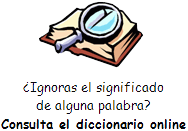 In
his popular 1980s song, American singer Rockwell sang the words, “I
always feel like somebody’s watching me.” In
his popular 1980s song, American singer Rockwell sang the words, “I
always feel like somebody’s watching me.”
He doesn’t know who is watching him. And, I suppose that makes it even
more frightening.
In English, when we don’t know who is performing the action of the verb,
or when the subject of a sentence is not very important, we often use
the passive voice. In that case, Rockwell could have sung:
I always feel like I’m being watched by somebody.
But…I suspect it wouldn’t have sounded as good.
Still, the structure works great in movie dialogue. In fact, spy movies
and crime films often make reference to “being watched” and “being
followed.” Both are examples of the passive voice.
And, when we make passive sentences with a continuous verb tense, we
call it the “continuous passive.” In an earlier program we told you
about the passive voice. You may remember that, in active sentences, the
subject performs the action of the verb. In passive sentences, the
subject receives the action of the verb.
Today, we’ll discuss the continuous passive form.
The most commonly used verb tenses for this form are present continuous
and past continuous. For now, let’s keep going with the present
continuous.
Present Continuous Passive
We don’t need a theatrical example. There are plenty of real life
situations where we use present continuous passive. Here are just a few:
Let’s say you’re in a busy electronics store. Several people are looking
at products. And, workers are walking around helping them. One comes to
you and says:
Good afternoon, are you being helped?
You answer:
No, not yet. Thanks. Can you show me your three most popular sound
systems?
In the United States, you will hear the question “Are you being helped?”
at busy stores, markets and restaurants.
Another situation where this form is useful is when something has been
sent for repair. Suppose your car breaks down on your way to work. You
take it to an auto shop. Then, you call your boss and say:
My car is being fixed. I’ll order a taxi to get to work.
The structure for the present continuous passive is: subject + is/are +
BEING + the past participle.
Note that the person who is fixing the car is not mentioned in the
sentence “My car is being fixed.” Leaving out the person or thing doing
the action is common in passive statements.
Past Continuous Passive
OK, now imagine that your car has been fixed. How can you say it with
the past continuous passive form? Let’s listen:
My car was being fixed. But I have it back now.
The only word we changed in the sentence about the car was “is.” We
changed it to the past tense “was.” Nothing else changes.
So, the structure for past continuous passive is: subject + was or were
+ BEING + past participle.
Notice that, in the continuous passive, the word “being” is always
present – no matter what the verb tense is.
Another place we often see the continuous passive is in news reporting.
Here’s an example:
Hundreds of children are being held at detention centers.
Yet, suppose the children were reunited with their families. How might
we change the example to past continuous passive? Let’s listen:
Hundreds of children were being held at detention centers.
We simply changed the word “are” to “were.” Nothing else changed. Easy,
so far? Good!
How to Make Continuous Passive
To make it even simpler, let’s look at it in steps.
We’ll start with an active sentence with a present continuous verb and
change it to passive voice. The first step is to locate the subject,
verb and object. Take a listen and give it a try:
The men are cleaning the boats.
Did you find the subject, verb and object? “The men” is the subject.
“Are cleaning” is the verb. And “the boats” is the object.
Once we’ve identified the object, we can make our passive sentence. To
do this, the object becomes the subject, so we put it first. The verb is
next and the new object (the men) is last. Here’s how it sounds:
The boats are being cleaned by the men.
Pay close attention to how the verb changed. It went from the active
“are cleaning” to the passive “are being cleaned.” Notice that the word
“cleaning” changes to the past participle: “cleaned.”
Remove the person or thing doing the action.
Earlier in the program, we told you that, in a passive sentence, the
person or thing doing the action is often not important so, in this
example, we’ll remove it. Let’s listen:
The boats are being cleaned.
Now, we’ll change it to the past continuous passive. Listen:
The boats were being cleaned.
The “are” changes to “were.” There are no other changes.
Being vs. Getting
In casual American English, we sometimes replace the word “being” with
“getting” for the continuous passive form. Here’s how one of our earlier
examples sounds with “getting:”
My car is getting fixed.
My car was getting fixed.
But this form is not acceptable for formal, written English. So, we
won’t use it in our practice today.
Now, you try it!
OK, now it’s your turn. Make the following active sentences into passive
ones. For this exercise, be sure to remove the person or thing doing the
action. For example, the active sentence “The restaurant is serving
dinner on the patio” would be “Dinner is being served on the patio” in
the passive form. The words “the restaurant” have been removed.
Here are your sentences:
She was painting the living room red.
They are driving the girls to the soccer match.
They were negotiating for more territory.
Were you recording me without permission?
|
 Sugerencias:
Sugerencias:![]() ). Utiliza el botón derecho del ratón y "guardar enlace" para
descargar el fichero a tu PC, tablet, Smartphone, etc.
). Utiliza el botón derecho del ratón y "guardar enlace" para
descargar el fichero a tu PC, tablet, Smartphone, etc.
![]() Escucha el audio
Escucha el audio
![]() ¿Quieres recibir en tu e-mail gratis y
periódicamente ejercicios, programas gratuitos, explicaciones y otros recursos
para mantener tu inglés sin esfuerzo? Apúntate a nuestro
cuaderno mensual de inglés.
¿Quieres recibir en tu e-mail gratis y
periódicamente ejercicios, programas gratuitos, explicaciones y otros recursos
para mantener tu inglés sin esfuerzo? Apúntate a nuestro
cuaderno mensual de inglés.




